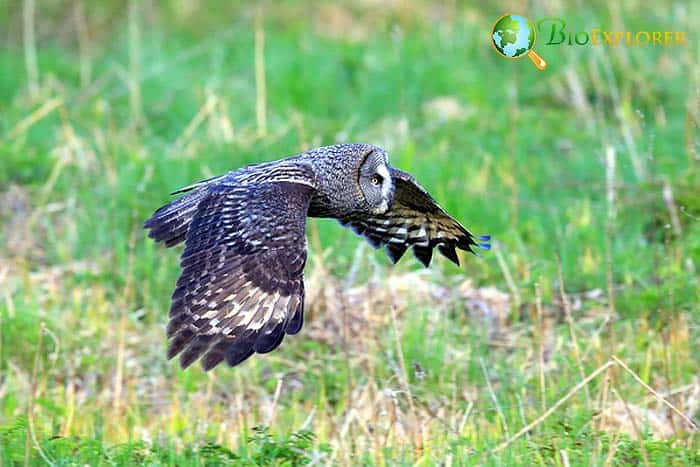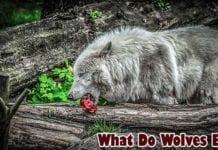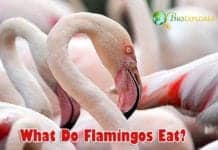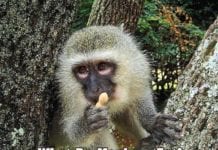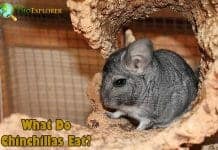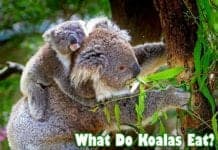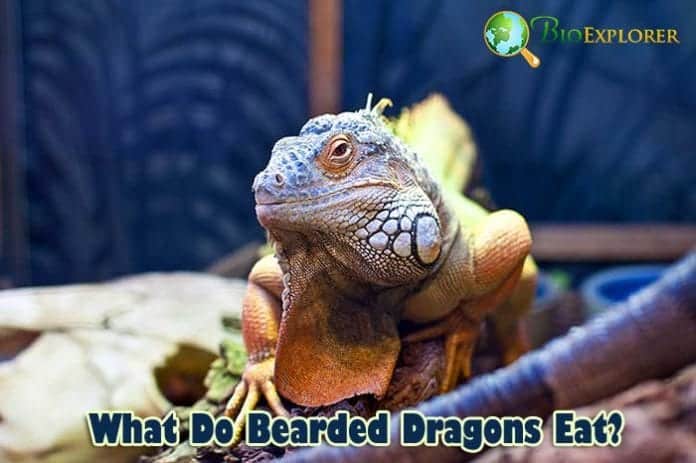
The bearded dragon got its name from the fact that it has some spiny scales (commonly found in reptiles) on the back of its head and spikes that line its chin.
The bearded dragon is an omnivore. Its diet consists of beetles, some rodent species, lizards, and plant matter such as flowers, fruits, leaves, and flowers.
Table of Contents
- What Do Bearded Dragons Eat?
- Bearded Dragons Diet by Types
- How Do Bearded Dragons Hunt?
- When Do Bearded Dragons Eat?
- How Often Do Bearded Dragons Eat?
- What veggies can bearded dragons eat?
- What do bearded dragons eat in the wild?
- Baby Bearded Dragon Diet
- What Eats Bearded Dragons?
- Where Do Bearded Dragons fit in the Animal Food Chain?
What Do Bearded Dragons Eat?
| Central Bearded Dragon | Pogona vitticeps | Plant material, insects, some rodent species, and lizards. |
| Western Bearded Dragon | Pogona minor | Fruits and small invertebrates. |
| Eastern Bearded Dragon | Pogona barbata | Plant matter (flowers, fruits, leaves, and berries) and insects. |
| Rankins Dragon | Pogona henrilawsoni | Plant material and insects (crickets). |
![]()
Bearded Dragons Diet by Types
Bearded dragons are classified under the genus Pogona. 8 species of the bearded dragons have been described. Insight into the habitats of 4 of these species is provided below.
What Do Central Bearded Dragons Eat?
The central bearded dragon is found in abundance in the central and eastern areas of Australia.
| Animalia | Squamata | Agamidae | Pogona | Pogona vitticeps |
- This species inhabits many habitats, including deserts, savannahs, scrublands, and dry forests.
- The central bearded dragons are considered generalist feeders and omnivores. It dines on plant material, insects, some rodent species, and lizards.
![]()
What Do Western Bearded Dragons Eat?
The western bearded dragon is considered a conspicuous lizard that can be easily spotted on country roads.
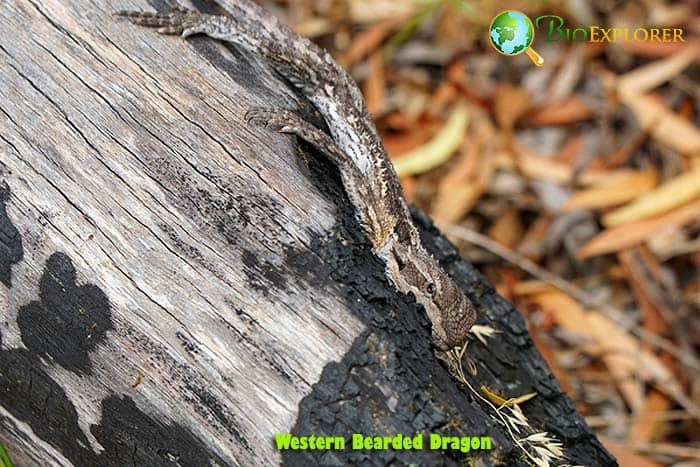
| Animalia | Squamata | Agamidae | Pogona | Pogona minor |
- As suggested by its name, the western bearded dragon is commonly found in the western parts of Australia.
- This species mostly inhabits scrublands, woodlands, and rocky outcrops.
- The western bearded dragons are omnivores whose diet entails fruits and small invertebrates.
![]()
What Do Eastern Bearded Dragons Eat?
The eastern bearded dragon is a giant lizard that can grow to lengths of between 40 and 50 cm.
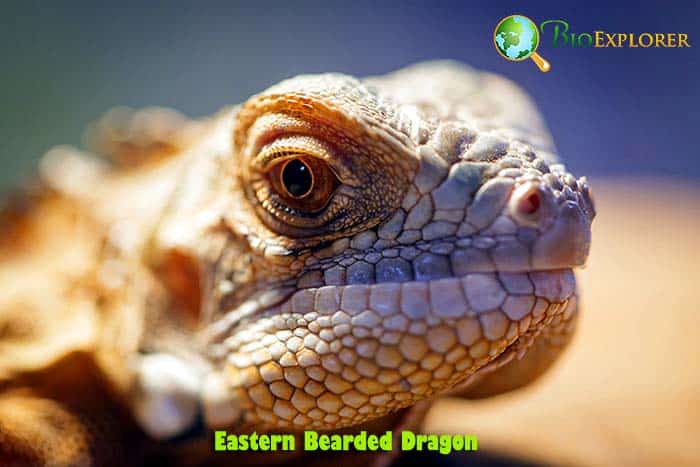
| Animalia | Squamata | Agamidae | Pogona | Pogona barbata |
- This species has a notable feature: its extended throat that resembles a beard. This species is also referred to as the Jew lizard.
- The eastern bearded dragon is widely distributed in eastern and central parts of mainland Australia.
- Its habitat consists of sclerophyll forests and woodlands. The preferred areas are those with locations to perch, which may entail logs or fallen tree branches.
- This species is an omnivore.
- About 90% of an adult eastern bearded dragon’s diet is made up of plant matter, which consists of flowers, fruits, leaves, and berries. The other 10% of nutrients are drawn from insects.
- In the case of juvenile members of this species, animal protein is a more significant portion of their diet.
![]()
What Do Rankin’s Dragons Eat?
.
| Animalia | Squamata | Agamidae | Pogona | Pogona henrylawsoni |
The Rankin’s dragon is also called the black-earth dragon.
- This species grows to an average length of 13 cm. Some of these lizards can grow to lengths of 30 cm.
- This species is widely distributed in Australian plains with black soils.
- These habitats can contain few trees and some seasonal grass.
- This lizard feeds on plant material and insects, with the example of crickets.
![]()
How Do Bearded Dragons Hunt?
One strategy the bearded dragons use to catch their prey is jumping on unsuspecting victims. Once they jump on their victim, they capture them using their sticky tongues and proceed to dine on them.
![]()
When Do Bearded Dragons Eat?
Bearded dragons are mostly diurnal. This means they tend to be active during the day and sleep at night. There are exceptions when bearded dragons display nocturnal tendencies. This often occurs after hot days.
![]()
How Often Do Bearded Dragons Eat?
In the wild, bearded dragons eat as much as they can fill their stomachs, as long as the food is readily available and the weather is conducive for them.
- During harsh winter weather, bearded dragons enter a state of brumation, where their respiratory, circulatory and digestive processes slow down.
- During this time, the rate of feeding drops significantly.
![]()
What veggies can bearded dragons eat?
As pets, bearded dragons eat many kinds of vegetables, such as squash, yams, kale, green beans, bell peppers, carrots, and much more. Vegetables are essential for bearded dragons’ diets, while fruits are special treats that should be given sparingly.
![]()
What do bearded dragons eat in the wild?
Wild bearded dragons mainly eat plants (fruits, leaves, flowers & more), insects, and tiny rodents or lizards if they can find them.
![]()
Baby Bearded Dragon Diet
Baby bearded dragons usually have an insect-and-worm-based diet (as opposed to adults whose diets are primarily herbivorous).
- Some of the insects that baby bearded dragons eat include pinhead crickets and mealworms.
- As they grow older, they should be fed more vegetables and be given bigger prey (tiny mice, for example).
![]()
What Eats Bearded Dragons?
![]()
Where Do Bearded Dragons fit in the Animal Food Chain?
Bearded dragons play an essential role in the animal food chain as prey and predators, as seen below.
- In their role as prey, bearded dragons provide a vital source of nutrition to birds of prey, snakes, foxes, large lizards, and dingoes.
- As predators, bearded dragons feed on organisms like rodents and insects. Because of their role as predators, bearded lizards help keep the population of rodents and insects under check.
![]()


